DIY Instant Rice with a Dehydrator
DIY Instant Rice is so easy to make in your dehydrator. It’s perfect for backpacking meals and quick meals on the fly. Follow these instructions for your own homemade instant rice! And what’s even better? You can do this any kind of rice or even quinoa!
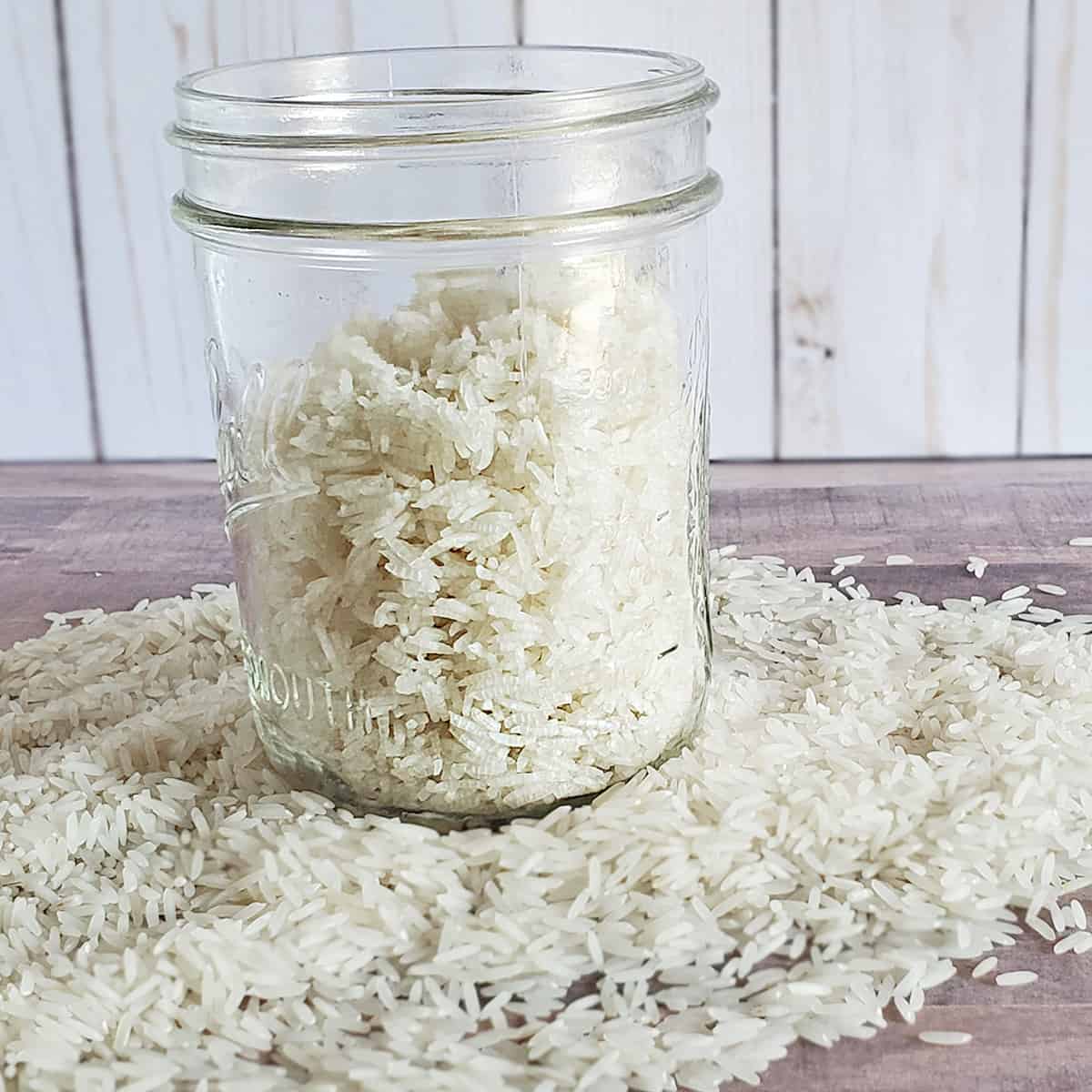
This recipe uses a dehydrator to dry cooked rice and speed up the cooking time in the future when you are ready to use it.
Why dehydrate rice?
Of course, the shelf life on long-grain white rice seems infinite. However, it isn’t so easy to use in a few situations where making ‘instant rice’ seems a better option
- Hiking meals – water and heating resources may be scarcer
- Meals in a jar are a great food storage ‘instant’ meal, and using pre-cooked rice can help make prep faster and storage longer on the shelf. Think about how this is great for Christmas gifts, too!
- Food Storage – pre-cooking and drying can extend the life of grains like brown rice further than the raw variety
- Emergency meals – water and heating resources may be scarcer, and having some easier-to-prep carbs that don’t require as much time and heat to make ready.
Cooking rice ahead of time allows you to dry it and create an “instant” rice just like the commercial variety you can get, but the options on what kind of grain you use are infinite! So you can do other grains that are more beneficial to your health than what may be currently available.
Dehydrated Rice and Food Poisoning
Room-temperature rice is a leading cause of food poisoning. So, when dehydrating rice, you need to follow some precautions to make sure you don’t harm yourself or your family.
Uncooked rice contains the spores of a bacteria called Bacillus cereus. It can survive even through the cooking process. But the real danger time for it is in the cooling process. (Source)
Cooked rice left to cool to room temperature is a breeding ground for Bacillus cereus. The longer it’s left, the more the growth. When you reheat it, it may not necessarily kill the bacteria, leading to food poisoning.
Thus, when dehydrating rice, please start with hot rice that has been thoroughly cooked (and steaming) and place it right onto your trays to alleviate any chance of food poisoning.
Homemade Instant Rice
Ultimately, taking a little time to prepare your rice now will save time and effort at dinner preparation time.
You’ll have healthy rice on the table in as little as 15 minutes and will save money by doing it yourself. Start looking for sales and stock up!
Step One – Cook
Cook long grain brown or white rice according to package directions; make sure all liquid is absorbed. I like to use a rice cooker and cook it in half-pound increments. You can even use leftovers from your last takeout.
Tip: I used an Instant Pot (I use this model from Amazon) to cook my rice for this tutorial. I found that basmati works as a better rice overall than regular long-grain rice because sticking is less of a factor. I also used the ‘soak/rinse, cook 3 minutes, natural release method’ vs the ‘rice’ button Still took about 25 minutes overall, but less fussing from me, and I had better results for separate grains from all the varieties of cooking I tried.
Step Two – Dehydrate
Cover individual dehydrator trays with parchment paper, fruit leather sheets, silicone sheets, or Paraflexx liners and spread the hot, cooked rice in a single layer. Dehydrate at 150°F / 65°C for 5 to 7 hours.
Step Three – Stir often
- Every thirty minutes to an hour, begin stirring your rice to break up any clumps.
- Rotate your trays as needed from top to bottom on a Nesco or other stackable machine, or one-quarter turn on an Excalibur dehydrator or other cabinet style machine.
- You will know the dehydrated rice is completely dry if it clicks when dropped on a tabletop.
Step Three- Cool and Store
Allow the rice to cool completely, condition for up to a week, then store it in canning jars or mylar bags for long-term storage. Use info found on this post about storing dehydrated foods to help you determine what size oxygen absorber you need for the size of your container.
Alternatively, you can remove the air from your jars with a vacuum sealer and Foodsaver jar attachments. You can see the video tutorial here on how to use them.
This will give you up to 2-3 years of shelf-stable storage.
Of course, simply storing it in an airtight container is fine for up to a year.
If using brown rice: Due to the high-fat content of brown rice, this homemade quick rice should be used within 12 months.
LEARN MORE: How to Properly Store Dehydrated Foods
How to Rehydrate Dehydrated Rice
Here’s where the “instant rice” concept really comes into play!
Simply mix 1:1 with the hot liquid of your choice! Let it steep, then add it to your meal.
If you are using a meal in a jar recipe, the rice will rehydrate with the meal and liquid included.
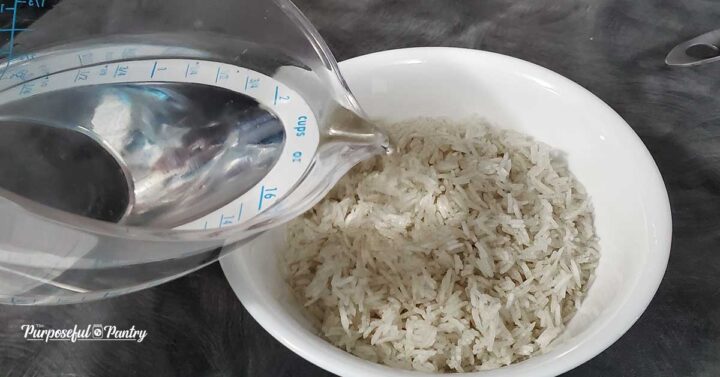
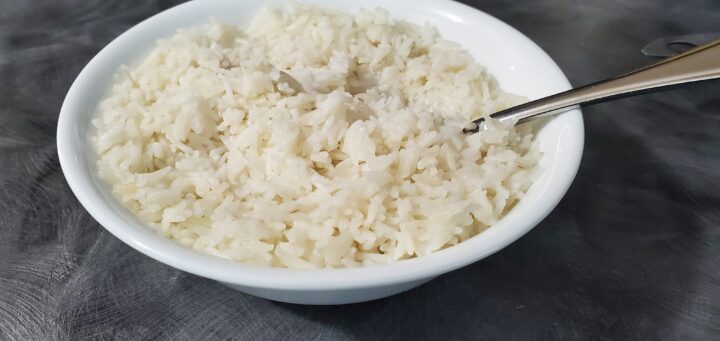
This tastes just like freshly made rice! I tested it with water, but in the future, I would do it with a broth of your choice to add more flavor.
Yield: Makes 2 cups of rice. 1 cup uncooked rice = 3 1/2 cups cooked rice = 2 cups dehydrated rice.
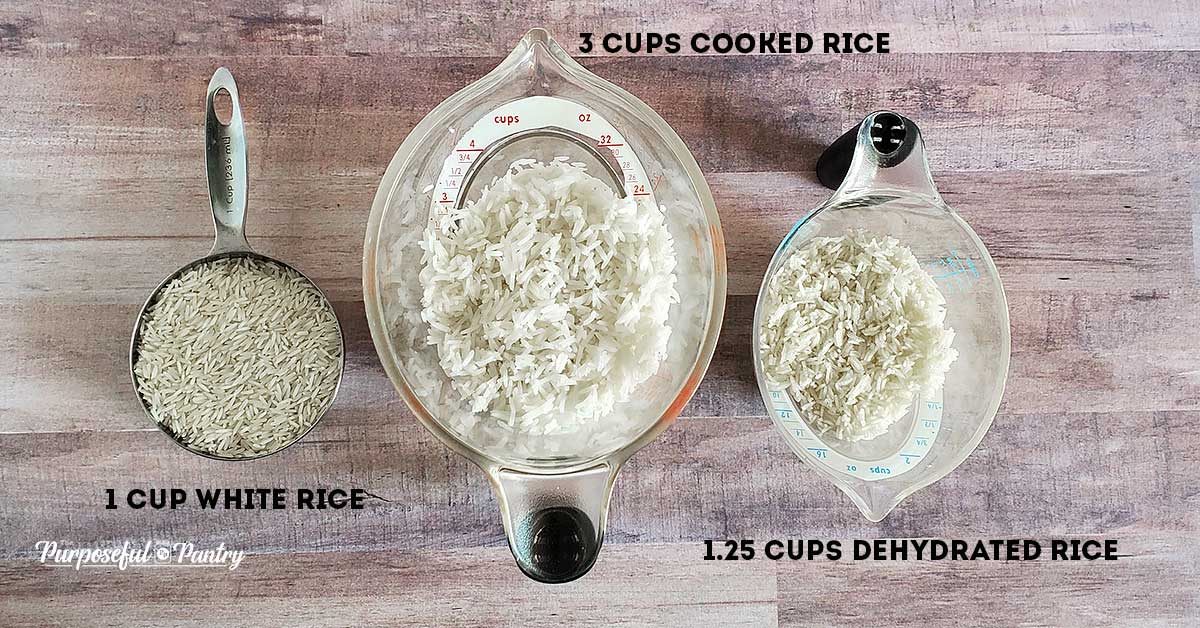
How to Use Instant Rice in Recipes
- Add chicken or beef bouillon to the soaking water for more flavor.
- Use in any soup in a jar mixture as a grain for added bulk.
- Add cinnamon and brown sugar during step 2. It’s terrific for a morning treat.
- Add dried broccoli and nutritional yeast and make a complete meal.
- Add peas, carrots, a little oil, and pasteurized egg white to the mix when rehydrating. Make sure to use boiling water to fully cook the egg.
Dehydrating Rice FAQ
What are the best rice grains to use?
This can be done with any white rice. However, I found that jasmine and basmati work better than traditional long-grain rice. The starches, even when soaked properly, can make long-grain rice stickier, thus harder to separate during drying time.
HOWEVER, use whatever rice you have on hand!
Can this be done with any rice?
Yes. Brown rice, which has a very short shelf life, can be used easily, and it cuts down on your cooking time tremendously from raw.
Plus, because you keep all the layers of brown rice intact, you have more nutrition with this grain than if you are using simple white rice.
And yes, this can be done with wild rice, too!
It also extends the shelf life of brown rice by twice as long! Due to the high-fat content of brown rice, this homemade quick rice should be used within 12 months.
Can this be done with other grains?
Yes, in fact, quinoa and barley are great alternatives to instant rice to make for hiking and backpacking meals or meals in a jar kits.
Is dehydrated rice safe to store?
Of course, cooked rice needs to be stored properly. However, for dehydrating, take your cooked rice straight to the dehydrator and dry it at proper temperatures. Eat the rehydrated rice quickly.
But storing dehydrated rice is perfectly safe as long as you follow the proper dehydrating process.
How long can you store homemade dried rice?
While your storage time may vary,
- White rice will last up to two years.
- Brown rice, and other whole grains, will last up to a year

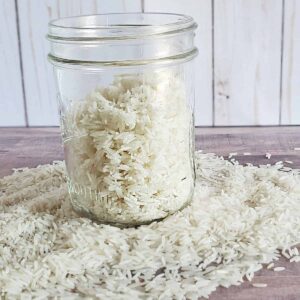
DIY Instant Rice
Equipment
- Sauce Pan
Ingredients
- Rice
- Water
Instructions
- Cook rice according to the package directions
- Place warm rice on dehydrator trays and spread out the best you can
- Dry at 150°F /65°C for 5-8 hours
- Periodically stir rice to separate grains
- Dry until translucent and 'ping' when dropped on a solid surface
- Cool and store in an airtight container
Darcy’s Tips
Nutritional information is an estimation only. Nutrient information for dehydrated foods is based on fresh. Use 1/4 of the servicing size for the same nutrient information. Thus 1 Cup of fresh fruit has the same sugars as 1/4 dried.
©ThePurposefulPantry. Photographs and content are copyright protected. Sharing of this recipe’s link is both encouraged and appreciated. Copying and/or pasting full recipes to any social media is strictly prohibited.

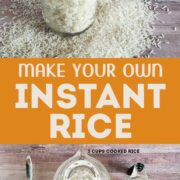
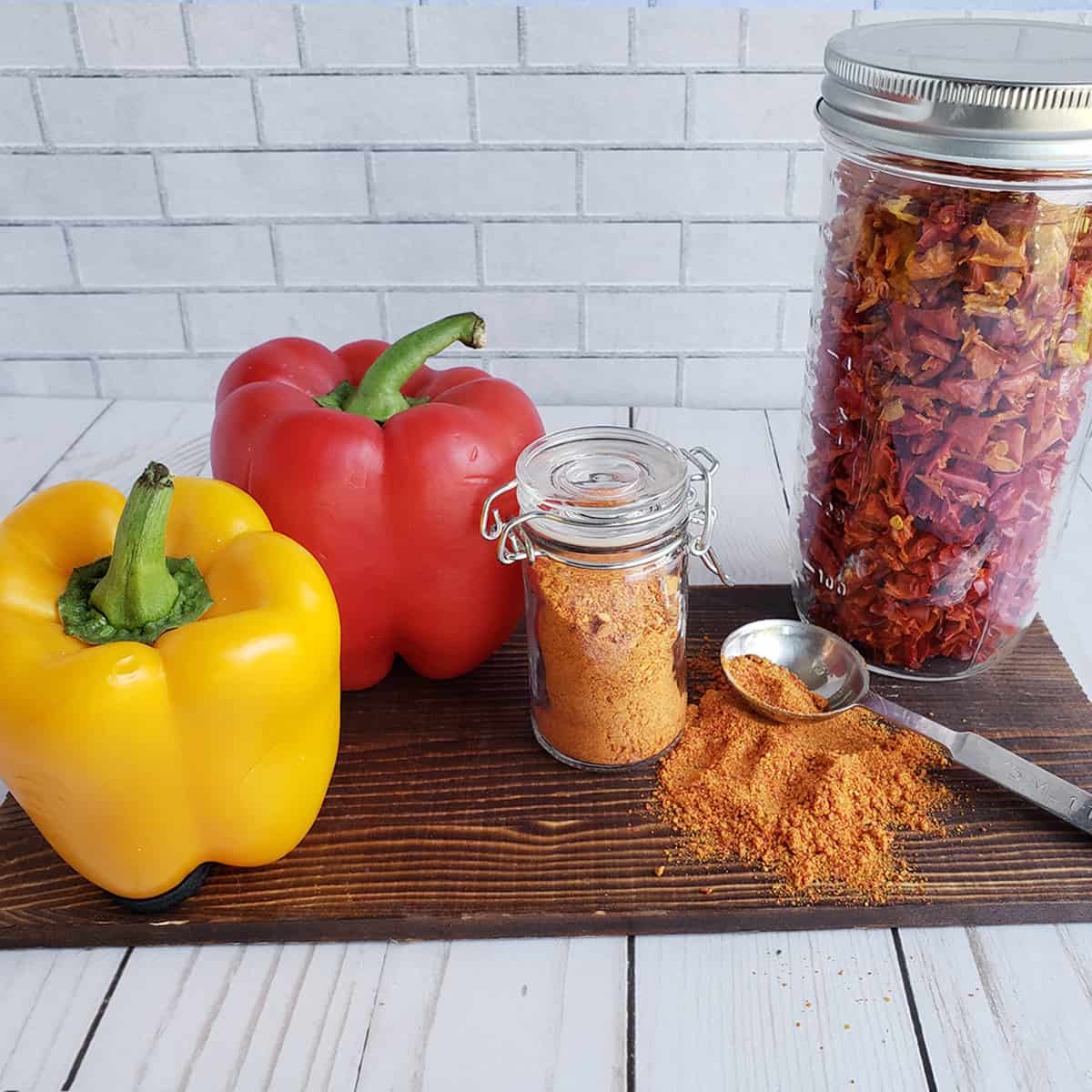
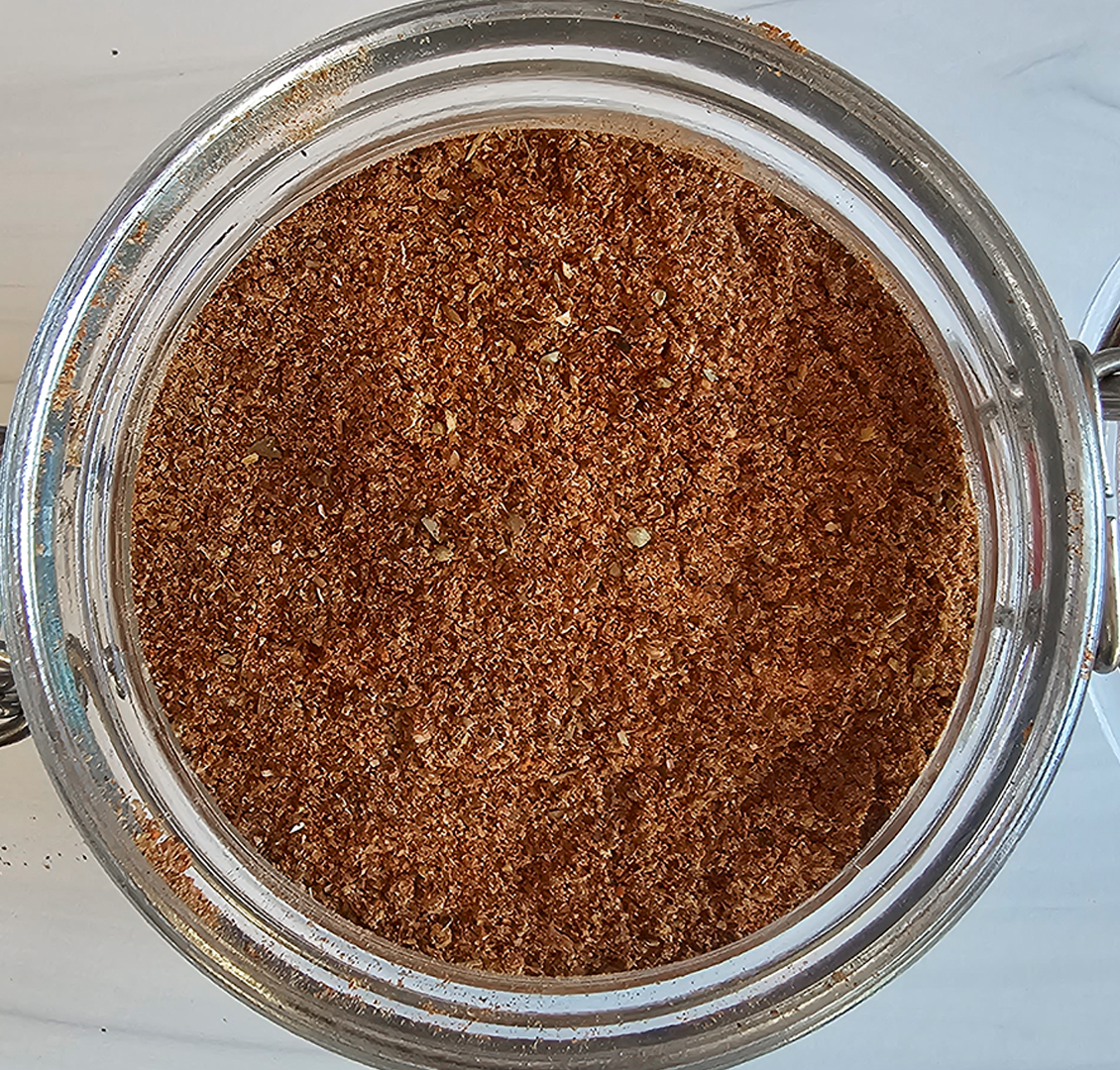
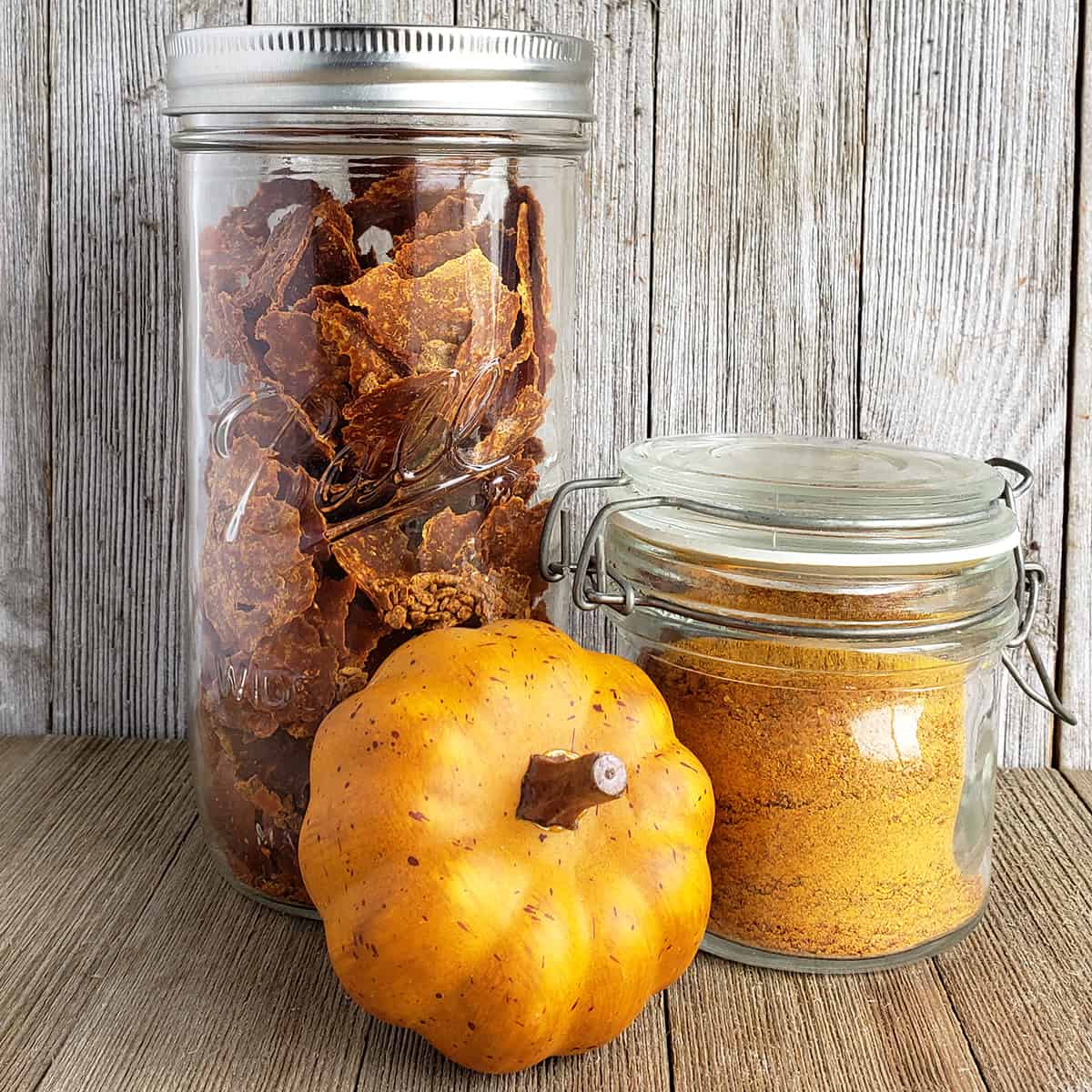
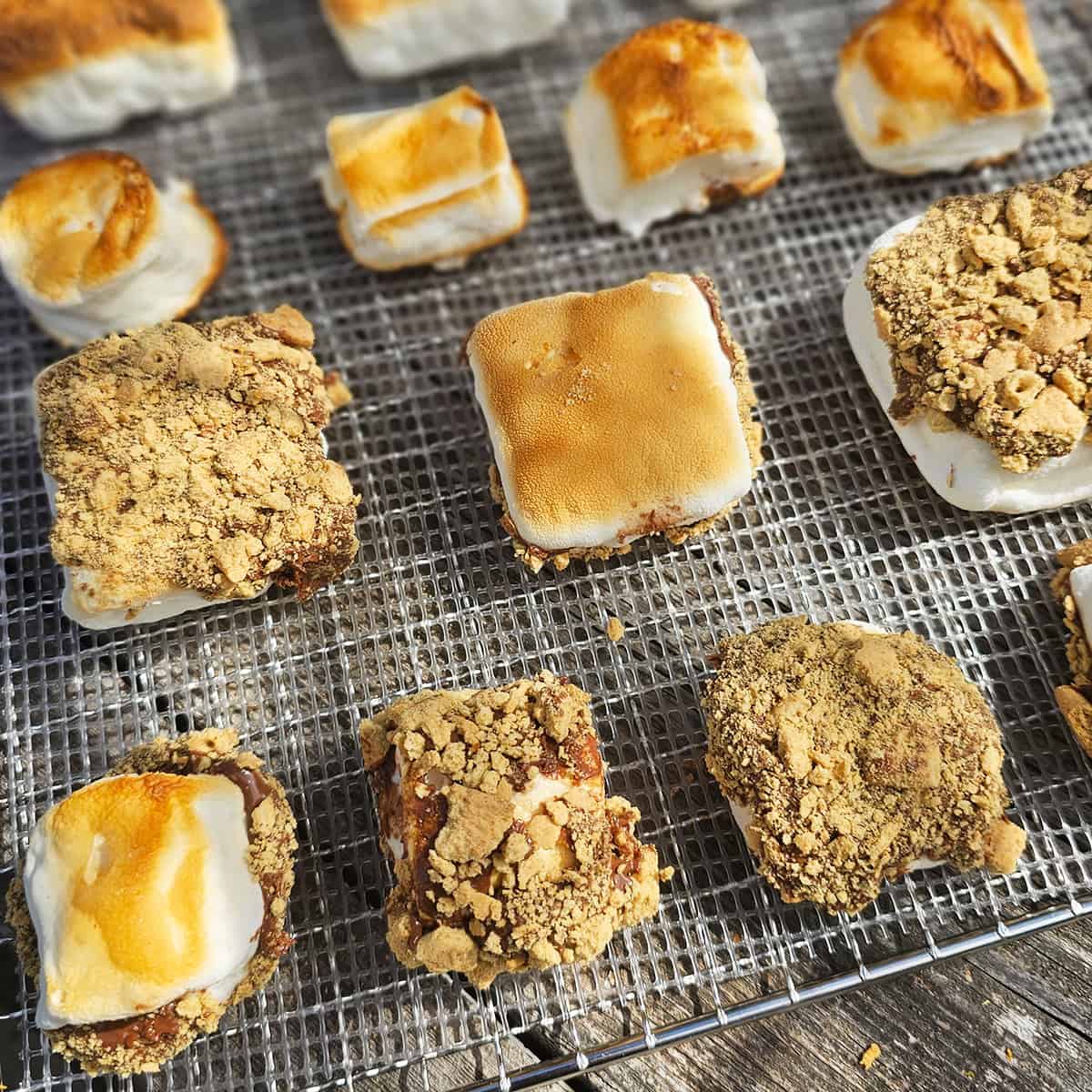
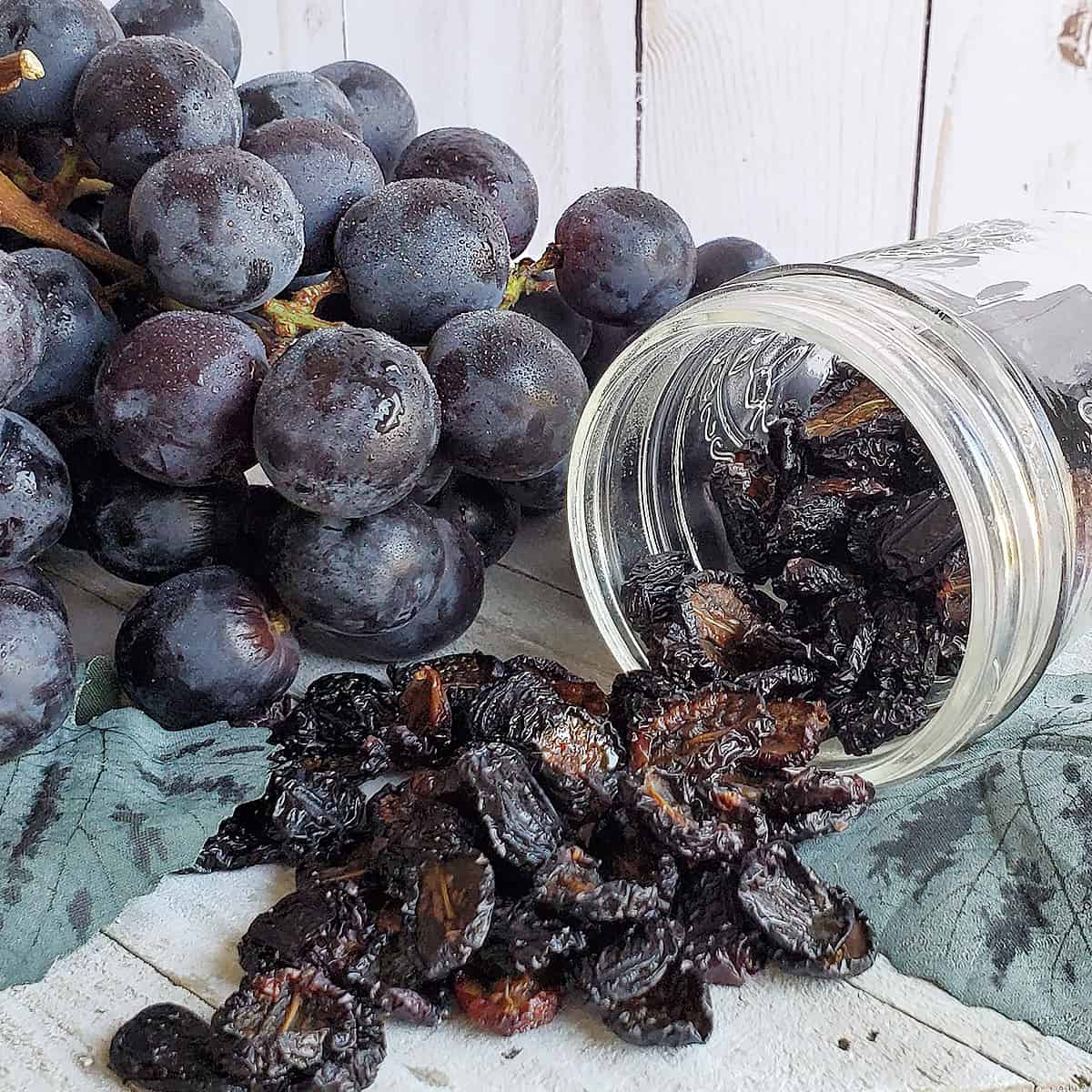
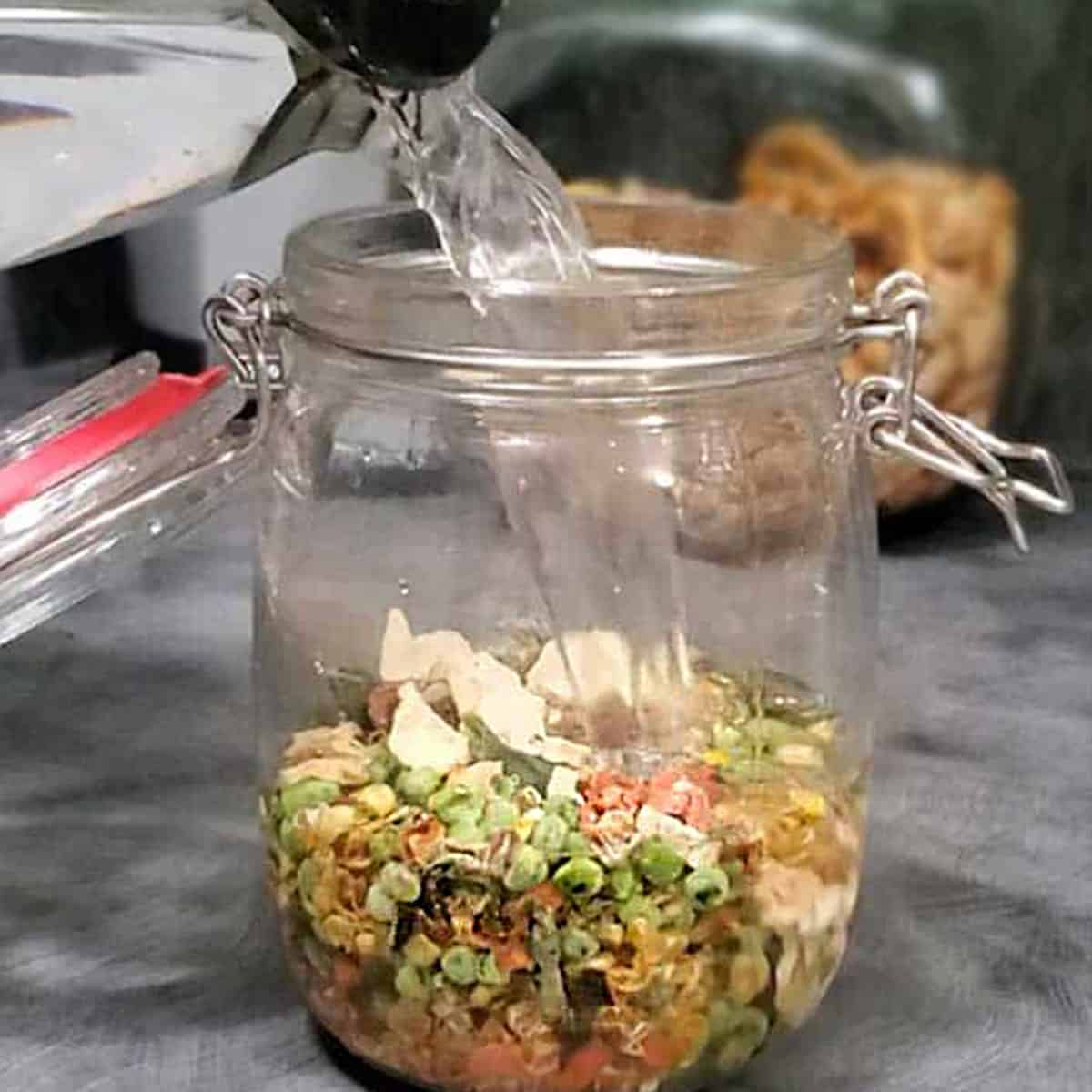
Love this idea Darcy, thank you! I am wondering if I could do this in a conventional oven. With the concerns of the bacteria, would the rice dehydrate “safe enough” without the fan/circulation like in a dehydrator?
As long as you keep the temperature up – that’s the issue. Crack the door to allow any moisture to escape, and make sure it’s keeping the temp inside above 150F.
Would this process work just as good with leftover rice from the fridge?
As long as you follow safety issues for rice to not cause food poisoning.
My Jasmine rice is clumpy should I rinse it before dehydrating? I did try dehydrating before but got one big clump. I even tried breaking it up while drying. Thanks
If you want to stay to safe temps, you can rinse in hot water and put right back on to the trays. But if you rinse your rice well before cooking, that will help.
I’m drying my rice now, however I made 4 cups (8 total) of rice with 3 tablespoons of butter in my water salt mixture will this be a problem..I’m not keeping for long term storage.
For a few week or a month it’s fine most likely. Next time use the butter when you rehydrate, not when you cook.
thank you. i kinda thouht afterwards that was maybe a no no!
Hi Darcy,
How about yellow rice to cook then dehydrate? Would it be the same as white? Shelf life any less than white or brown rice?
Thank you.
Any grain – so yes, yellow rice is fine.
I use a little oil in the bottom of my instant pot to avoid rice sticking. I am now dehydrating basmati rice cooked this way, but am wondering if it was a mistake to use oil in the rice. Will the added oil make the rice go rancid, or shorten the shelf time.
I won’t say it will make the rice go rancid, but using oil in long-term storage is never a good idea. If you plan on using the rice quickly, you have some leeway. A tiny bit might not make a huge difference, but it’s not a recommendation for storage. Snacking – sure.
I make my rice in a Pyrex bowl INSIDE my IP. Don’t have to worry about sticking to the pot and already in a serving/storage bowl. I put the water in the IP, put my rice & water in the bowl and use a sling to lift in an out. Manual 4 minutes, 10 minutes quick release. Perfect rice and no scrubbing.
what are the proportions of rice to water. I’ve never made rice in the instant pot. Thank you.
Hi Darcy!
Quick question – I just did this with brown rice that just barely passed its expiration date. Does this extend that date another 12 months or do I still need to use it up ASAP?
Thanks so much.
There is no real ‘expiration’ date on rice. You’ll know when it’s turning bad when the smell changes – not by the date – that’s a best by date, not an expiration (which is generally saved for refrigerated goods). It does not extend the date out another twelve months, it just gives you some more time – there’s no set time.
Hello! I’m trying to make backpacking meal ingredients. I cooked my brown rice, let it cool, dehydrated it until it was dried grains and clicked on a table.
But come rehydrating, this did not work well. I poured near boiling water on top of a small scoop of rice (as in covered with water), put a lid on my glass jar, wrapped it in towels to insulate, and 20 min later it’s like a crunchy chewy rice. So I let it sit another 10 min with no improvement.
Did I do it wrong or should I just try basmati?
Excellent, simple instructions. Just what I am looking for.
Any issue with adding salt to the water (rice cooker)? (other than forgetting and re-salting the rice/meal on reconstitution).
No – just remember that flavors concentrate in dehydrating, and you have to be careful about what salt you add later. But it can limit how you use it, then, too.
excellent directions that REALLY work! 🙂 thank you!!